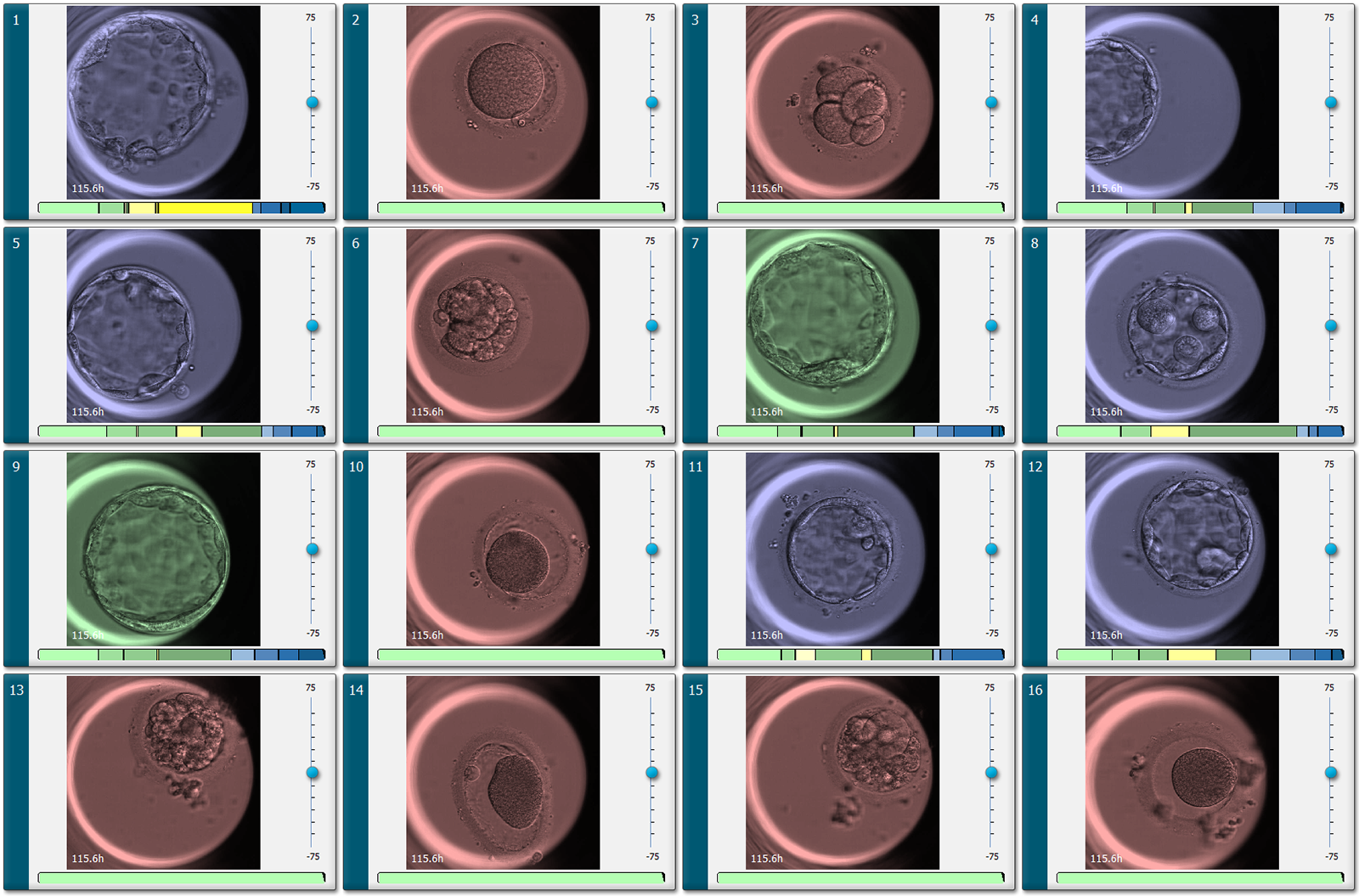
When working in an IVF lab there are different ways to assess embryos. You can score embryos using morphology and traditional grading, you can use preimplantation genetic testing (PGT) to get the genetic profiling of embryos prior to implantation, and finally you can analyse morphokinetic parameters of embryo development using time-lapse information. How do we bring together morphology, PGT and time-lapse to improve our embryo selection?
Morphology, morphokinetics and genetics in combination
Many IVF labs use a combination of all three methods to get an improved insight in which next action to choose in IVF treatment. There are different advantages and disadvantages to them.
Morphology alone is not sufficient
When using traditional grading there is a high level of inconsistency between embryologists. An inter-operator variation exists, both on a laboratory level and across borders.1 In addition, embryo morphology is dynamic and standard observation is limited which means that morphology alone is not sufficient.2-8
Time-lapse gives you more information
Morphokinetics, as seen with time-lapse, can enhance the power of embryo selection because it allows for morphology to be assessed more accurately. Dynamic morphology and cleavage patterns are both examples of embryo development that you miss without time-lapse.7, 9
Time-lapse can also be used to classify embryos according to their chance of implantation and live birth.10-11 Additionally, time-lapse has also been demonstrated as a method that can be used for indicating the chance of an embryo being chromosomally normal.12, 13
PGT tells you about the embryo’s genetic material
PGT, on the other hand, answers the question of ‘is the embryo chromosomally normal?’ with a yes or no answer based on a sample of the embryo. PGT can thus be used an embryo selection tool if you have euploid embryos to biopsy, possibly reaching a 60 % implantation rate. This method is particularly useful for older patients. However, PGT is an invasive and relatively costly method for embryo assessment and transferring a chromosomally normal embryo does not ensure a positive pregnancy outcome. But when used in combination with time-lapse, PGT becomes stronger. Time-lapse can be used as a pre-screen to prioritise which embryos should be sent for biopsy and diagnosis by classifying those embryos with the highest risk of being aneuploid. Here you may choose to test only those embryos that, according to time-lapse assessment, have a fair chance of being chromosomally normal.
Enhance your decision-making
Choosing the embryo(s) most likely to be viable is the goal of any embryo selection process. Both traditional grading, time-lapse and PGT are well-established methods for enhancing the chance of transferring a viable embryo. Morphology, morphokinetics and genetics are very different biological parameters, but using them together can enhance your decision-making and get you closer to choosing the appropriate next action in IVF treatment.
Watch my presentation at ESHRE
At ESHRE 2018 I gave the talk ‘How traditional grading, PGS and time-lapse complement each other’ in the APART and Vitrolife symposium ‘How time-lapse technology can improve clinical outcome in natural and mild stimulation cycles.’ You can watch the full presentation by clicking the button below.
The opinions expressed by Vitrolife’s guest bloggers are their own and do not necessarily reflect Vitrolife's opinions or views.
References:
1. Sundvall, L., et al., Inter- and intra-observer variability of time-lapse annotations. Hum Reprod, 2013. 28(12): p. 3215-21
2. Montag, M., J. Liebenthron, and M. Koster, Which morphological scoring system is relevant in human embryo development? Placenta, 2011. 32 Suppl 3: p. S252-6
3. Hardarson, T., et al., Internalization of cellular fragments in a human embryo: time-lapse recordings. Reprod Biomed Online, 2002. 5(1): p. 36-8
4. Yakin, K., B. Balaban, and B. Urman, Impact of the presence of one or more multinucleated blastomeres on the developmental potential of the embryo to the blastocyst stage. Fertil Steril, 2005. 83(1): p. 243-5
5. Chamayou, S., et al., The use of morphokinetic parameters to select all embryos with full capacity to implant. J Assist Reprod Genet, 2013. 30(5): p. 703-10
6. Basile, N., et al., The use of morphokinetics as a predictor of implantation: a multicentric study to define and validate an algorithm for embryo selection. Hum Reprod, 2015. 30(2): p. 276-83
7. Ergin, E.G., et al., Frequency of embryo multinucleation detected by time-lapse system and its impact on pregnancy outcome. Fertil Steril, 2014
8. Hardarson, T., et al., Human embryos with unevenly sized blastomeres have lower pregnancy and implantation rates: indications for aneuploidy and multinucleation. Hum Reprod, 2001. 16(2): p. 313-8
9. Rubio, I., et al., Clinical validation of embryo culture and selection by morphokinetic analysis: a randomized, controlled trial of the EmbryoScope. Fertil Steril, 2014
10. Pribenszky, C., A. M. Nilselid and M. Montag (2017). "Time-lapse culture with morphokinetic embryo selection improves pregnancy and live birth chances and reduces early pregnancy loss: a meta-analysis." Reprod Biomed Online 35(5): 511-520.
11. Pribenszky, C., A. M. Nilselid and M. Montag (2018). "Response: time-lapse systems for ART." Reprod Biomed Online 36(3): 290-292.
12. Campbell, A., et al., Retrospective analysis of outcomes after IVF using an aneuploidy risk model derived from timelapse imaging without PGS. Reprod Biomed Online, 2013. 27: p. 140-146
13. Desai, N., et al., Analysis of embryo morphokinetics, multinucleation and cleavage anomalies using continuous time-lapse monitoring in blastocyst transfer cycles. Reprod Biol Endocrinol, 2014. 12: p. 54
Topics: Time-lapse, genetic testing
Written by Dr. Cristina Hickman
Dr. Cristina Hickman has over 15 years of research and clinical embryology experience, with wide international experience in embryology, andrology, state-of-the-art IVF techniques. She has designed and seen to completion innovative new IVF laboratories in the Middle East, the Caribbean and the UK. She has developed her research skills as a member of scientific teams in the USA, Ireland, England, Scotland and the Caribbean.
